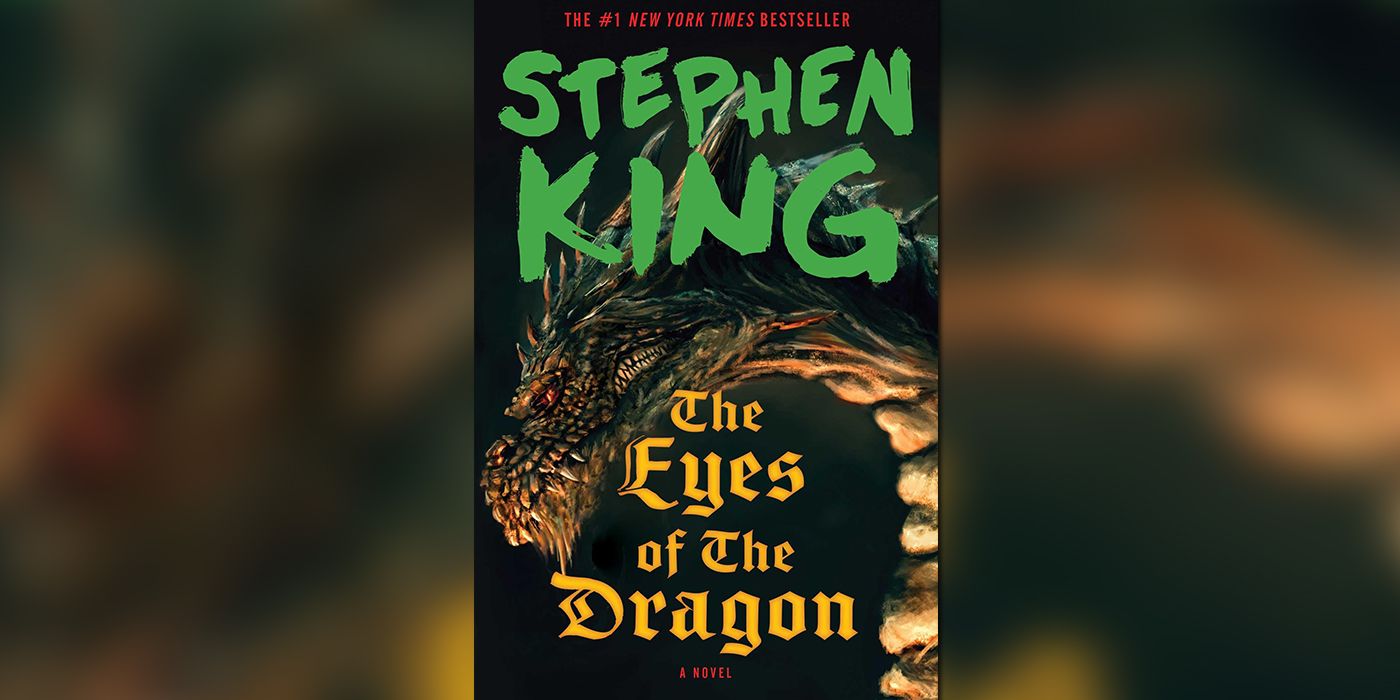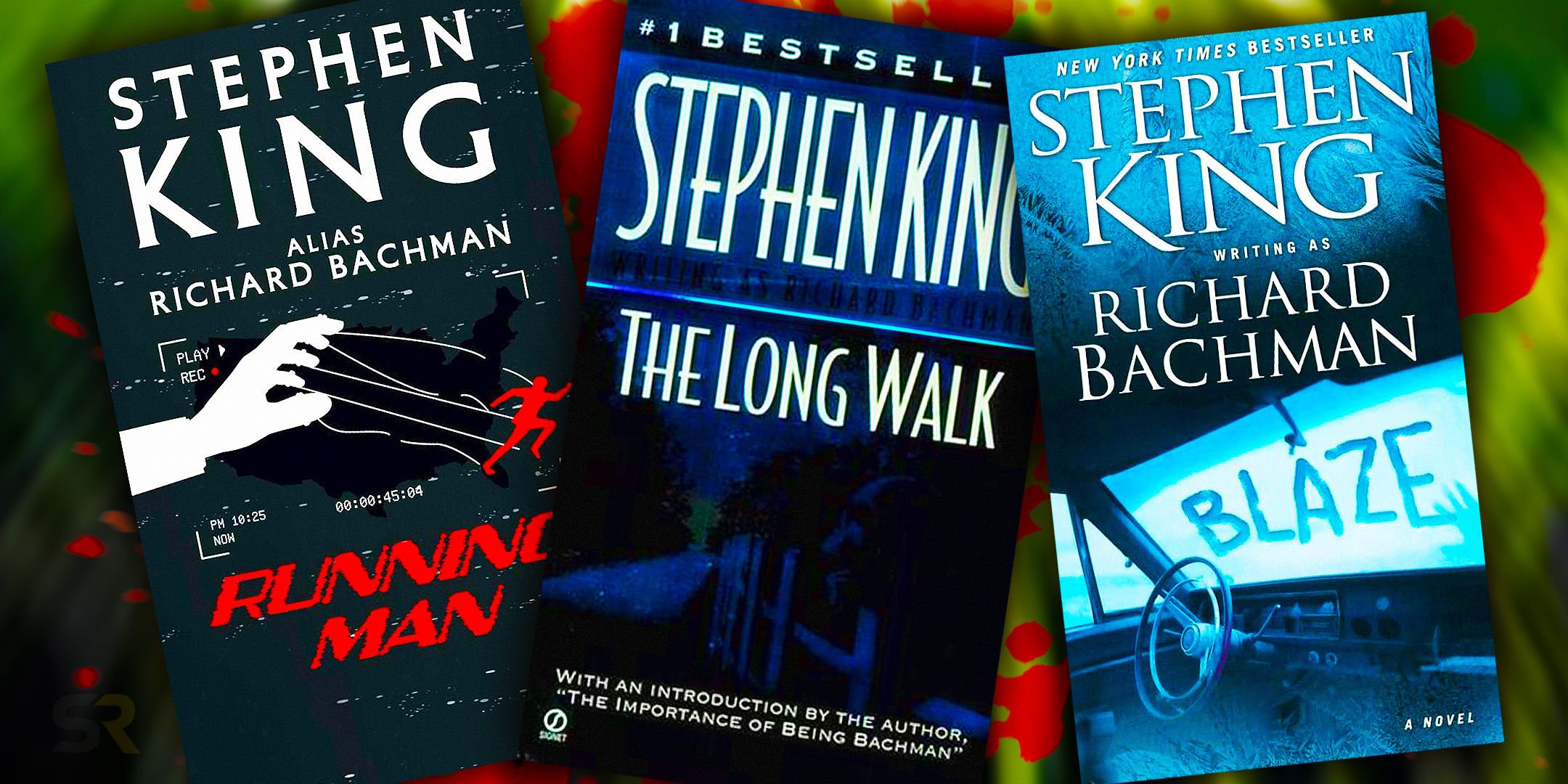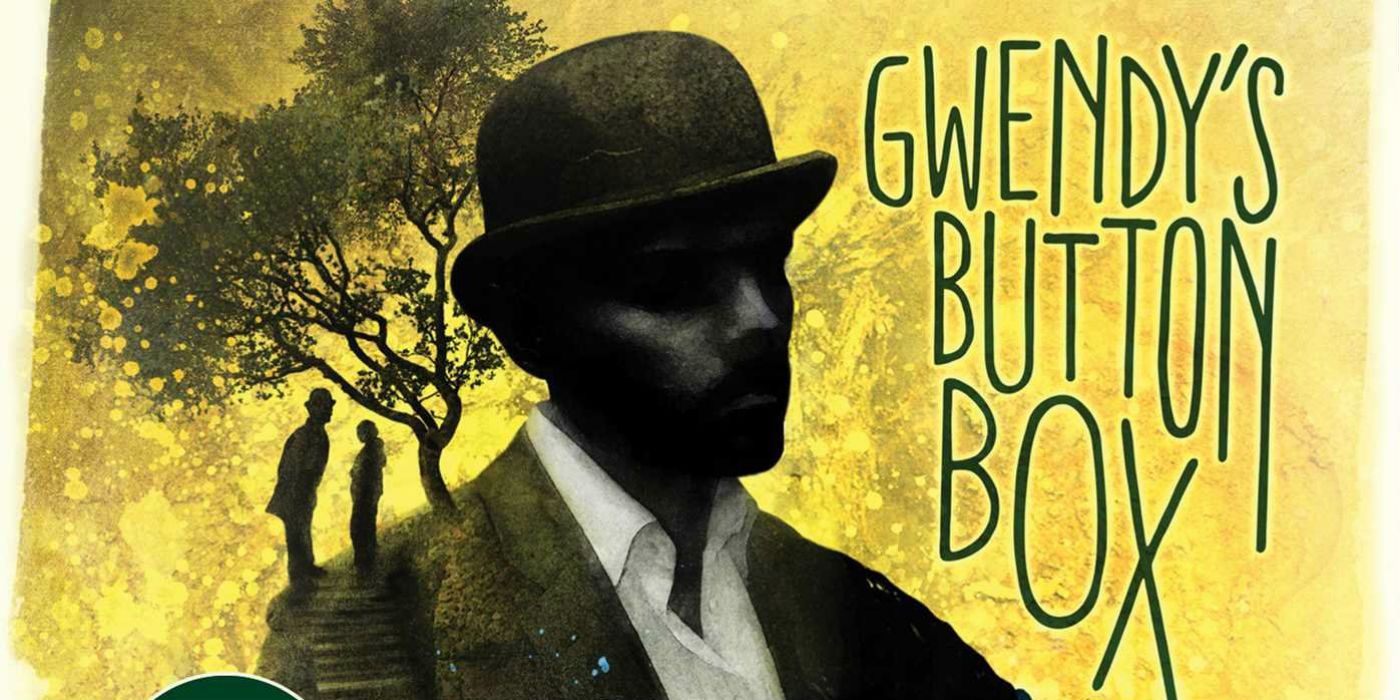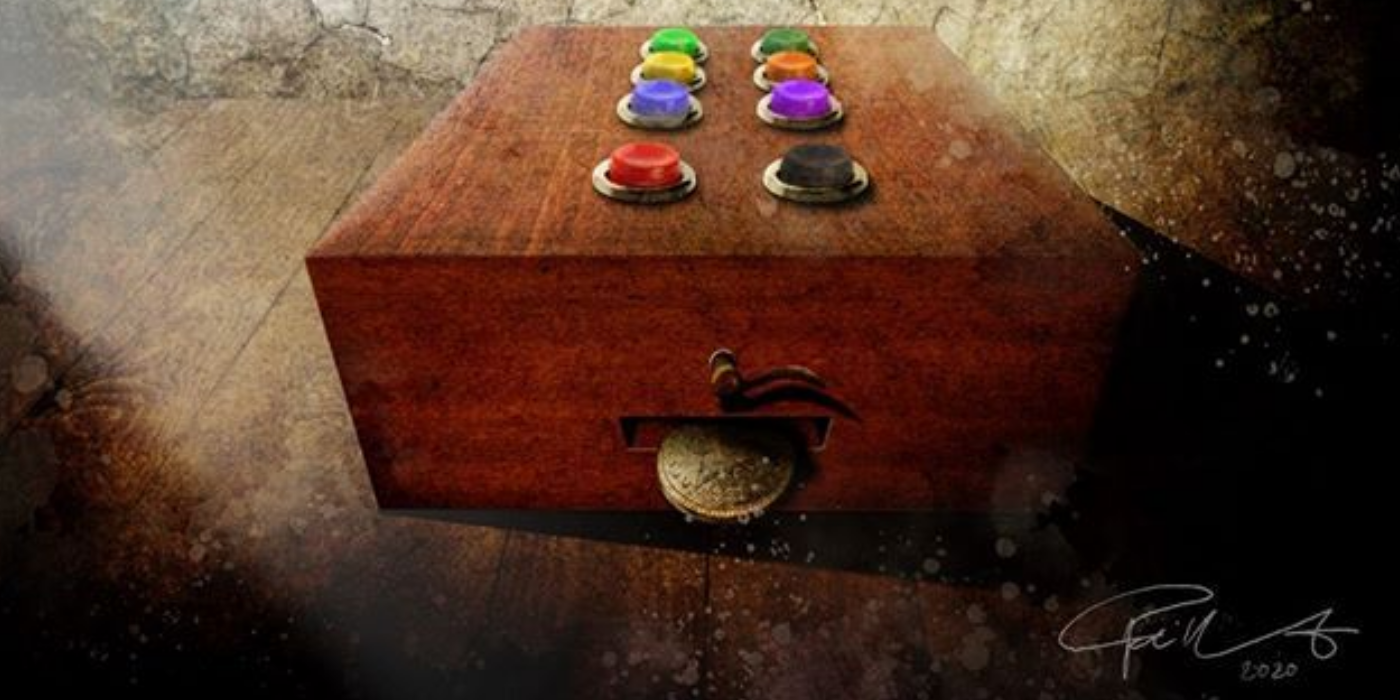
Constant Readers know Randall Flagg has appeared and been referenced in more Stephen King short stories and books than any other character, but even they might not realize how many. Even though Randall Flagg is an acolyte of the Crimson King, and though some would say Pennywise takes the crown, Flagg is King’s ultimate villain, the devil in the doorway of every story and the catalyst for so many of them. Truly, his influence is virtually impossible to accurately grasp, especially because he so often sets plans into motion years, if not decades, before the events they’re meant to direct.
While Flagg always has the same flavor in most of his appearances, he is, at his core, a chameleon, which is why it’s been so easy to incorporate him into so many works, whether just on the edges or right at the center of the narrative. Through his centuries, he’s been a sorcerer and magician, a confidant and betrayer, a demonic figure and a seeming liberator, but one thing is certain: where Randall Flagg goes, death follows in Stephen King’s books. The table and article below drive home just how far-reaching and vast the shadow he casts – and Constant Readers will notice the number of entries on this list and smile.
|
Books & Stories In Which Randall Flagg Appears |
|
|---|---|
|
Book/Story |
Appearance |
|
The Dark Tower: The Gunslinger |
Primary Antagonist |
|
The Dark Tower II: The Drawing of the Three |
Primary Antagonist (unseen) |
|
The Dark Tower III: The Waste Lands |
Minor Antagonist |
|
The Dark Tower IV: Wizard and Glass |
Overarching Antagonist |
|
The Dark Tower V: Wolves of the Calla |
Secondary Antagonist |
|
The Dark Tower VI: Song of Susannah |
Secondary Antagonist (unseen) |
|
The Dark Tower VII: The Dark Tower |
Secondary Antagonist |
|
The Dark Tower: The Wind Through the Keyhole |
Co-Primary Antagonist |
|
The Stand |
Primary Antagonist |
|
The Eyes of the Dragon |
Primary Antagonist |
|
Blind Willie |
Minor Antagonist |
|
The Mist |
Fan Theory |
|
From a Buick 8 |
Hinted At |
|
Carrie |
Fan Theory |
|
The Long Walk |
Hinted At |
|
Children of the Corn |
Fan Theory |
|
Gwendy’s Button Box |
Primary Antagonist |
|
Gwendy’s Magic Feather |
Primary Antagonist (unseen) |
|
Gwendy’s Final Task |
Primary Antagonist |
19
The Dark Tower: The Gunslinger
1982
While the name Randall Flagg is most associated with The Stand, the character himself is a thread that binds all of King’s magnum opus, The Dark Tower series, together. Even though the Crimson King is the villain behind Randall Flagg in The Dark Tower, the latter is the most impactful villain in the series and as important as Roland himself, albeit under different guises.
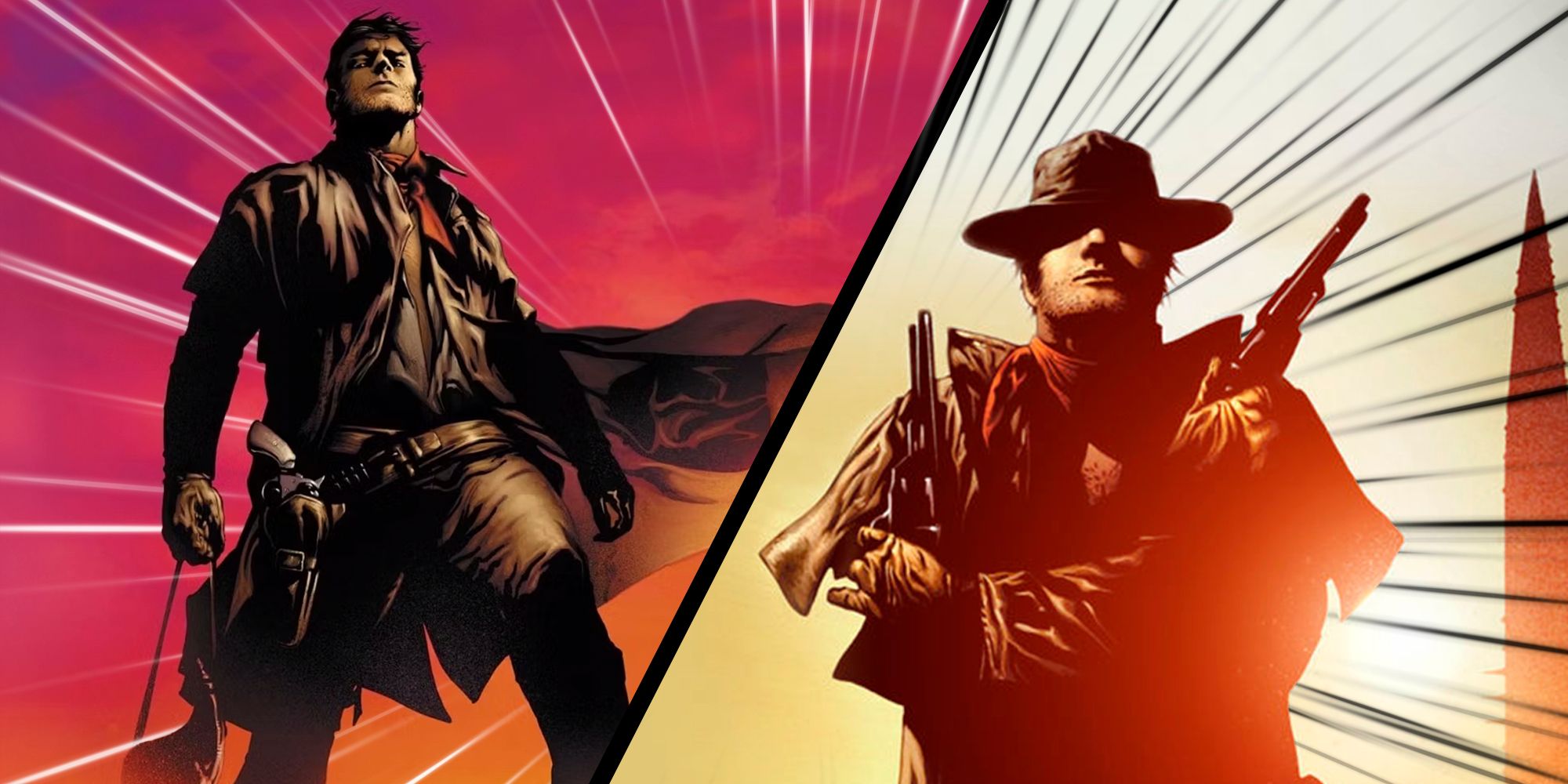
Related
Stephen King’s Gunslinger Revised Edition Fixed 1 Major Dark Tower Villain Problem
The revised and extended edition of Stephen King’s The Gunslinger made a slight change that actually had huge implications for the series’ villains.
Beyond just being Stephen King’s best villain, period, the sorcerer specifically proves a worthy adversary for Roland, as wily as the gunslinger is determined. He drives much of the plot of the first book and, thus, the series itself. It’s fitting that what ended up becoming King’s vast, interconnected universe all began with, “The man in black fled across the desert and the gunslinger followed.”
18
The Dark Tower II: The Drawing Of The Three
1987
The man in black continues as the sequel’s overarching antagonist, though, unlike in The Gunslinger, he remains unseen in the second book in the present day (though he does appear in a flashback). Despite not appearing directly on the page, it’s his tarot reading of Roland’s future at the end of the first book that puts the gunslinger on his path and drives the events of the second. In this way, the man in black starts to take on the persona Randall Flagg has often adopted across Stephen King’s books – that of a puppetmaster and villain manipulating everyone from behind the scenes.
17
The Dark Tower III: The Waste Lands
1991
Randall Flagg reappears on the page in The Waste Lands, albeit with yet another name and another guise. This time, the identity he takes is Richard Fannin, a supposed dark gunslinger with black hair and cruel looks. In a relationship akin to the manipulative master-servant one he shared with the troubled Trashcan Man in The Stand, Fannin manipulates the Tick-Tock Man, a mentally unstable man once known as Andrew Quick. Fannin takes advantage of Tick-Tock Man’s enmity towards Roland and his ka-tet, convincing his new acolyte that it’s up to him to stop Roland’s crew from reaching the Tower, again illustrating Flagg’s knack for finding and preying on the weak.
16
The Dark Tower IV: Wizard And Glass
1997
Wizard and Glass is the one book that really begins to show Randall Flagg’s far-reaching and long-running influence on Roland Deschain’s life and fated journey to reach the Tower, and thus, Flagg’s influence on Stephen King’s entire interconnected universe. In the fourth book’s story within a story framing, Flagg plays a prominent role in both the past and present.
In the past, he’s known as Marten Broadcloak, the untrustworthy advisor of Roland’s father and whose betrayal starts Roland on his path to becoming a full gunslinger. In the present, he has another run-in with Roland and his friends, revealing these identities have always been his and that he’s been moving the gunslinger like a chess piece all along.
15
The Dark Tower V: Wolves Of The Calla
2003
While he’s not the primary antagonist in Wolves of the Calla, Randall Flagg continues to influence the events off the page. The sorcerer pops up in a flashback scene to cross paths with one of Roland’s future ka-tet, once again offering a poisoned chalice of a gift, meant to spring a trap in a future only he can see.
The Black Thirteen is one of Maerlyn’s Rainbow/Wizard’s Rainbow, thirteen glass orbs with supernatural and magical properties. Along with Black Thirteen, the colors of the other balls are crimson, orange, yellow, pink, dark blue, dark green, indigo, lime, azure, brown, and pearl gray, each with a different power.
This time, it’s Donald Callahan of ‘Salem’s Lot, who reappears in the Dark Tower books. He tells of his life as a vampire hunter after the events of ‘Salem’s Lot, including his seeming death. Yet he wakes up, still alive, in a Way Station. There, a man named Walter o’Dim – of course, Randall Flagg – gives him the Black Thirteen, a powerful, cursed ball that, unbeknownst to Callahan, Flagg one day hopes will kill Roland and lead to his destruction.
14
The Dark Tower VI: Song Of Susannah
2004
Flagg is again unseen in Song of Susannah, and even pulls back a bit as the primary antagonist, though his influence is still felt. In truth, he doesn’t need to appear, as his plan is already set in motion. The Black Thirteen is stolen by Mia, a succubus who takes control of Susannah’s body, intending to use her as a vessel to birth the were-spider Mordred Deschain.
In a story ripped straight from Arthurian legend, Mordred is Roland’s part-son and destined to kill him. Meanwhile, the Black Thirteen starts working its evil influence, almost causing Jake and Callahan to murder each other when they find it before Callahan’s prayers put it to sleep, enabling them to lock it away.
13
The Dark Tower VII: The Dark Tower
2004
The man in black/Walter appears for the final time in the series’ chronology in The Dark Tower – at least, the last time that’s written on the page. His final gambit is his most audacious of all: trick the incredibly powerful Mordred into opening the Dark Tower’s door for him, whereupon Walter would install himself on the top level and become the God of All. But Walter’s fatal miscalculation is underestimating how powerful Mordred truly is. The monstrous boy senses Walter’s manipulation and psychically enters Walter’s mind, forcing the sorcerer to rip out parts of his own body, which Mordred then consumes before killing him.
“He pounced upon Randall Flagg, Walter o’ Dim, Walter Padick that was. There were more screams, but only a few. And then Roland’s old enemy was no more.”
– The Dark Tower
In one last twist, however, it’s revealed the Dark Tower series is a repeating time loop, so it’s entirely possible that Walter survived. Considering his history, he almost certainly did – somehow.
12
The Dark Tower: The Wind Through The Keyhole
2012
There is one more Dark Tower story in which Randall Flagg appears, though it’s an out-of-chronology, standalone story that, in the timeline, slots between Wizard and Glass and Wolves of the Calla. The Wind through the Keyhole is another story where a young Roland, early in his career as a gunslinger, does not realize the man in the tale he’s relating is actually Walter/Flagg.
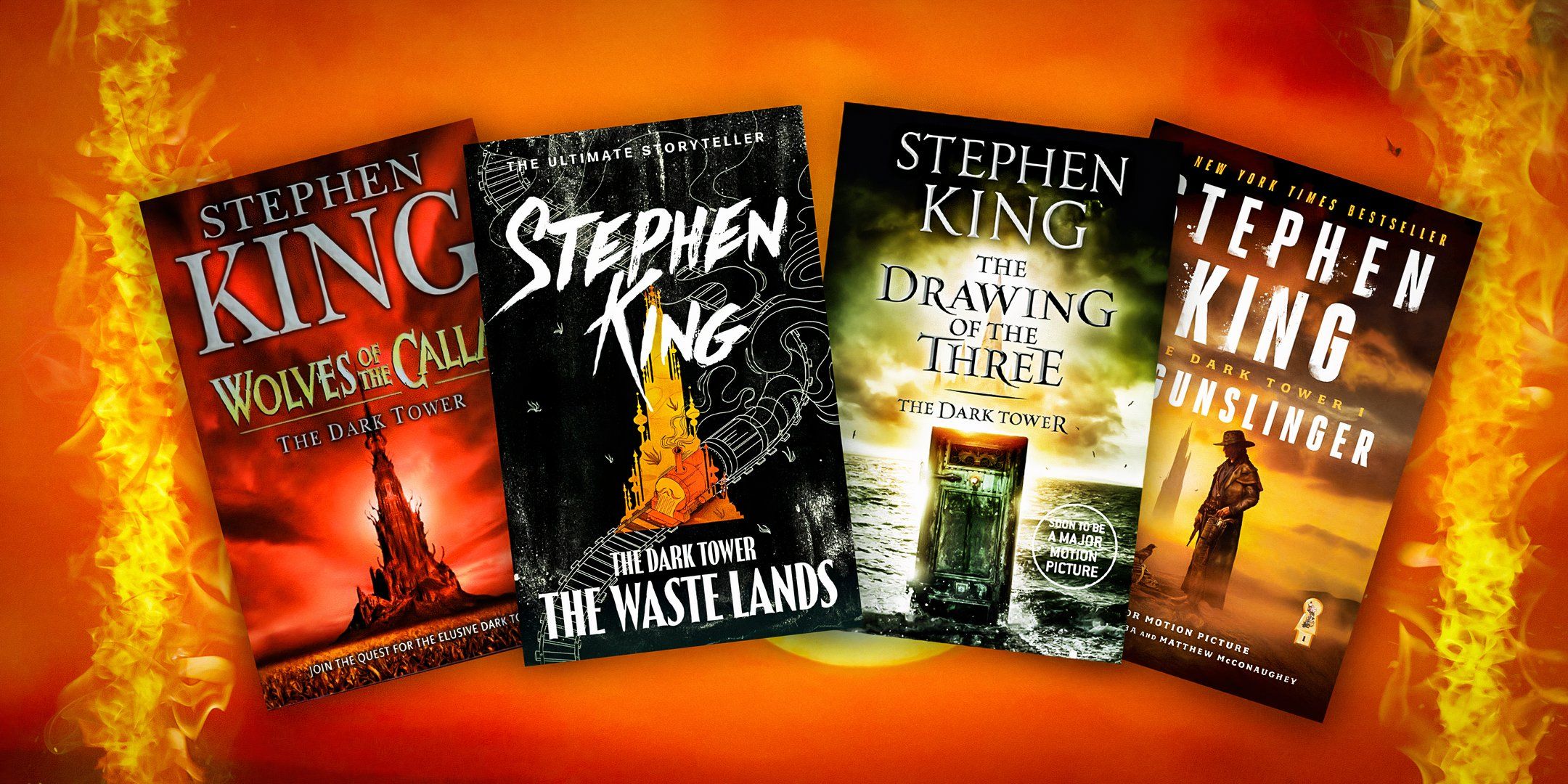
Related
How To Read Stephen King’s Dark Tower Books & Stories In Order (Chronologically & By Publication Date)
The universe of The Dark Tower is sprawling and vast and it can help to know how to read the books & in which order to read them before jumping in.
In his story, which is framed as something of a fairy tale, the character, who is obviously Flagg, goes by the name The Covenant Man. Flagg once again plays the puppetmaster by manipulating events throughout. Though the story doesn’t even happen to Roland himself, it’s another example of the subtle ways that the sorcerer influenced Roland’s life from a young age.
11
The Stand
1984
If The Dark Tower series is the one work Randall Flagg is most closely associated with, The Stand is the other. The 1978 post-apocalyptic epic is not only one of Flagg’s most well-known appearances, it’s also his first. King intended for Randall Flagg to be his version of a Satanic figure, a demonic trickster who influences wayward souls to great acts of evil. He does exactly that in a version of America that has been decimated by the superflu, calling to certain darkly chosen ones to join him in Las Vegas to build his new hell on earth. While he’s not the devil, his good and righteous counterpart, Mother Abigail, explains he might as well be.
“’He ain’t Satan,’ she said, ‘but he and Satan know of each other and have kept their councils together of old.’”
– The Stand
10
The Eyes Of The Dragon
1984
King’s pure fantasy book The Eyes of the Dragon isn’t considered an official Dark Tower book, but it might as well be, considering it’s set in Delain, an All-world barony in the same region as Roland’s own barony of Gilead. The more direct connection to The Dark Tower, however, is that the major villain of the book is Randall Flagg. It’s not clear where The Eyes of the Dragon takes place in the timeline compared to the main Dark Tower story, but it is confirmed that it’s the earliest chronological story that takes place in Roland’s world.

Related
One Stephen King Non-Horror Book Would Be Cheap To Adapt (Despite Fantasy Being So Expensive)
One of Stephen King’s most ambitious novels could be easily adapted to the big screen thanks to what should be a relatively small budget.
The book reveals that Flagg has been appearing in the barony of Delain for hundreds of years in various guises, always with the goal of throwing it into a bloody civil war. This time, he manipulates Prince Thomas and preys upon the young, lonely boy’s resentment of his widely adored older brother, Prince Peter. Flagg sets Peter up to take the fall for the king’s murder, locking him in a tower before installing the easily manipulated Thomas on the throne and acting as king by proxy. After his scheme and identity as a demonic figure are revealed, it’s not clear where Flagg goes next, but it is known that Thomas and his butler, Dennis, pursue the sorcerer, much like Roland’s later quest.
9
Blind Willie
1999
“Blind Willie,” first published in the 1999 collection Hearts in Atlantis, is one of the many short stories in which Randall Flagg briefly appears under one of his many pseudonyms with the initials “R.F.” While he doesn’t appear in the present, he influenced the past. In the present day, Vietnam vet Willie Shearman is haunted by the war and also his involvement in the brutal beating of the girl Carol when he was a kid.
In truth, Flagg’s fingerprints are all over every story in Hearts in Atlantis.
As a form of penance, Willie tracks Carol’s progress through life from afar as she grows up. As such, he notices when her activism begins to take on a darker, more militant turn when she falls under the tutelage of a cult leader-like figure named Raymond Fiegler. Carol’s sad path culminates in an office bombing and subsequent raid that gets her killed, another person used and discarded by Flagg. In truth, Flagg’s fingerprints are all over every story in Hearts in Atlantis.
8
The Mist
1985
Randall Flagg’s appearance in the novella The Mist isn’t an appearance at all, but a reference, and even that reference is unconfirmed. Still, despite the fan theoretical nature of the connection, there’s enough there to believe that Randall Flagg is the one responsible for unleashing the plague of the mist and the deadly creatures it hides.
There’s enough there to believe that Randall Flagg is the one responsible for unleashing the plague of the mist and the deadly creatures it hides.
At one point in the story, the fanatically religious Mrs. Carmody states that the creatures of the mist were released by “the imp” into their world. Interestingly, Flagg is referred to as both “the imp” and “the imp of the Devil” in The Stand. Likely also purposeful is the seemingly out-of-place interaction, before the main events of the story, with a random man wearing sunglasses and a denim jacket who almost hits protagonist David’s car. Like his nickname of the imp, Randall Flagg’s outfit in The Stand is, very notably, a denim jacket. Specific word choices like that are rarely accidents in Stephen King’s world.
7
From A Buick 8
2002
Randall Flagg’s appearance in From a Buick 8 is another example of King never outright naming Flagg, but rather winking at the reader with the implication, “We both know who this is.” The mysterious figure responsible for the events is an unnamed man dressed in black, who inexplicably leaves a 1953 Buick Roadmaster in the parking lot of a gas station in Western Pennsylvania. As with most of Flagg’s gifts, the Roadmaster is actually an evil object and not of this world. It births, at random intervals, strange creatures and plants, and is connected to several strange disappearances of people last seen in its vicinity. It’s revealed the car is a portal to another world – but which world that is remains unknown.
6
Carrie
1974
Like The Mist, Randall Flagg’s connection to Carrie is more a fan theory than anything else. The theory posits that Randall Flagg is actually Carrie White’s father, and it may seem farfetched at first glance, but actually makes a lot of sense considering the context. Little is known about Carrie’s father, Ralph White, but what is known is he was also a religious fanatic and that Carrie was conceived one night when he came home drunk and raped Margaret. He dies soon after, leading to the theory that he was either another identity used by Flagg or that Flagg was working through him when he raped Margaret.
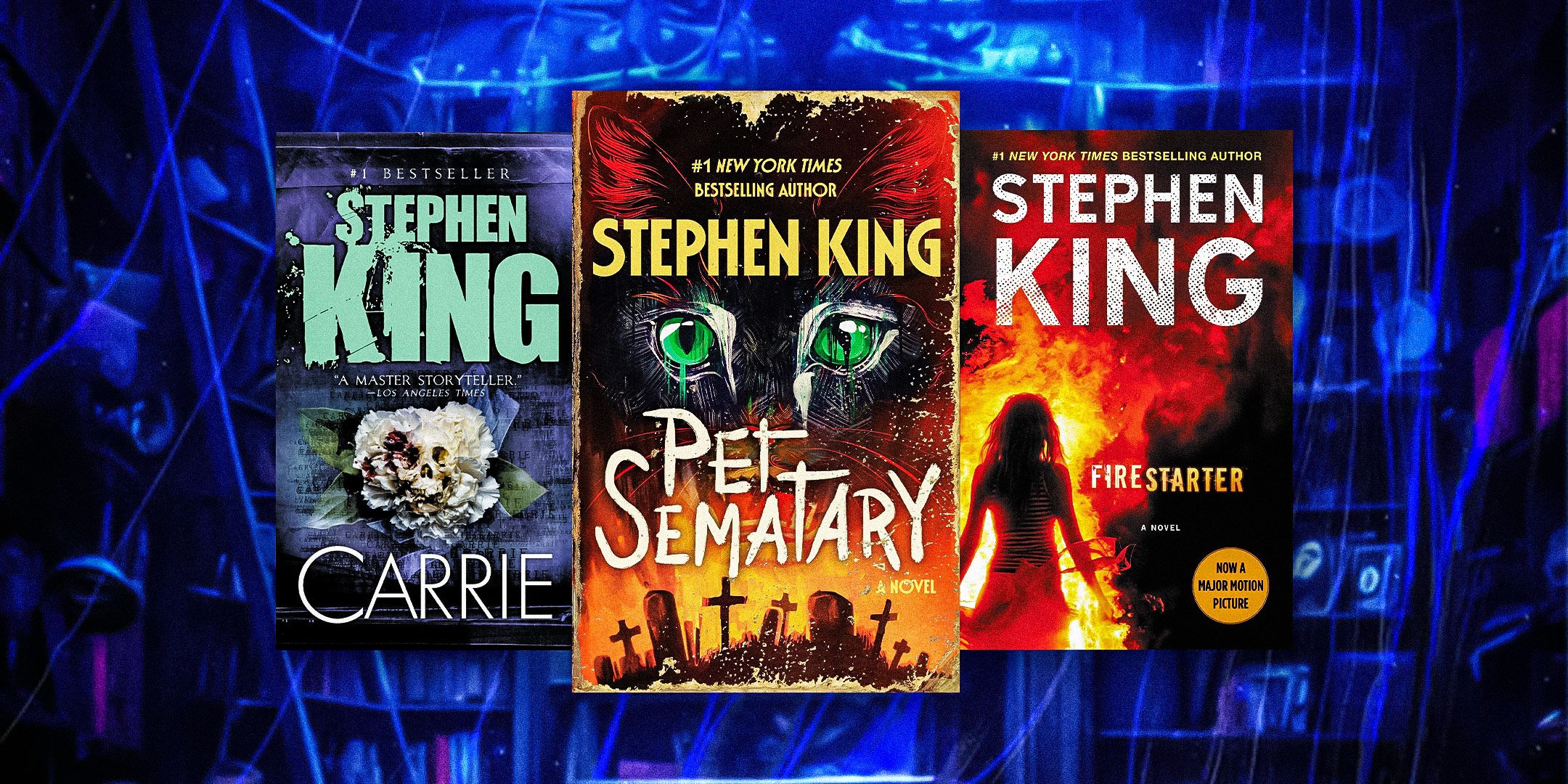
Related
10 Best Stephen King Books To Start With For Readers Who Have Never Read His Work
With such a vast catalog of novels, reading Stephen King can feel overwhelming, yet there are a choice few books that are the perfect place to start.
The unstable Margaret also mentions battling a demonic figure known as “The Black Man” in the novel, lending more evidence to the theory that it might have indeed been Randall Flagg who impregnated her. In that context, Carrie’s psychic powers make much more sense. If Flagg revealed his true visage and nature to Margaret, it’s entirely possible that it might have snapped the rest of her sanity as a religious zealot to bring what she thought of as an “evil” child into the world, explaining her cruel treatment of Carrie.
5
The Long Walk
1979
Flagg’s appearance in The Long Walk falls under the same category of “hinted at” as From a Buick 8 in that he appears on the page, but only as a shadowy figure we can surmise is the ancient sorcerer. One of King’s early dystopian novels really has nothing to do with Flagg, following the teenager Ray Garraty as he tries to complete and survive the grueling Long Walk competition. Toward the very end of the book, however, Garraty begins to see a dark figure on the road ahead, a dark figure who beckons him forward, until Garraty is, inexplicably, the winner of the Long Walk.
A hand on his shoulder. Garraty shook it off impatiently. The dark figure beckoned, beckoned in the rain, beckoned for him to come and walk, to come and play the game. And it was time to get started. There was still so far to walk.
Eyes blind, supplicating hands held out before him as if for alms, Garraty walked toward the dark figure.
And when the hand touched his shoulder again, he somehow found the strength to run.
– The Long Walk
Exhausted and half-mad, Garraty refuses to stop, but finds himself running toward the figure, and here is where the ending gets murky and ambiguous. Some readers think that Garraty is simply hallucinating in his madness. Others believe the dark figure is actually Death, symbolizing that Garraty has lost the will to live. Plenty of readers, however, believe it’s Randall Flagg, the demonic Pied Piper often referred to as “the dark man” leading yet another soul to ruin. Once again, it’s not confirmed, but there’s certainly evidence to support it being the sorcerer.
4
Children Of The Corn
1978
As with the handful of others on the list, Flagg’s tie to the short story “Children of the Corn” is a theory borne out by context clues rather than actual on-page confirmation and one of the longer-running theories about Flagg. The theory is simple: Randall Flagg is He Who Walks Behind the Rows. Whenever Flagg appears to his adversary, Mother Abigail, in The Stand, it’s always as a shadowy entity speaking to her from the fields of corn around her house, so there’s already precedent for that symbolism around him.
Whenever Flagg appears to his adversary, Mother Abigail, in The Stand, it’s always as a shadowy entity speaking to her from the fields of corn around her house, so there’s already precedent for that symbolism around him.
It’s also exactly Flagg’s modus operandi to manipulate a bunch of lost children to commit atrocities at his behest. Though he’s described in “Children of the Corn” as more of a primordial entity, the framing used to describe He Who Walks Behind the Rows in that story and Flagg in The Stand is very similar. In both instances, the entity is described as a lurking, malevolent thing in the shadows of the corn, something with burning red eyes that glow between the stalks and whose coming fills those who witness it with an almost holy terror. Arguably, this could be Flagg at his most primal and demonic in both instances.
3
Gwendy’s Button Box
2017
Randall Flagg makes one final appearance (so far) in another series, and (so far) his only appearance in a book co-written by King and another author. That would be the Gwendy trilogy by King and Richard Chizmar. In the first novella, he goes by the name Richard Farris. Young Gwendy also refers to him as the Man in Black at first, as, when he first meets her and invites her to “palaver” – a wordThe Gunslingerreaders will be very familiar with – he’s unsurprisingly dressed in all black with a black hat.
As always, it’s a devil’s bargain and the gift is not a gift at all but a trap to ensnare the soul.
The dark man offers 12-year-old Gwendy a magic box – but, as always, it’s a devil’s bargain and the gift is not a gift at all but a trap to ensnare the soul. If Gwendy uses the levers, it simply spits out magical lucky chocolate animals and silver dollars. If she pushes any of the buttons, however, something horrible will happen – a natural disaster, a massacre, a tragedy. What once seemed to be a gift ends up becoming a curse for Gwendy as she realizes she can no longer use it, but neither can she give it away lest it fall into the wrong hands.
2
Gwendy’s Magic Feather
2019
Technically, Gwendy’s Magic Feather isn’t a Stephen King book – it’s the one book of the trilogy that Richard Chizmar wrote himself. However, considering King co-wrote the other two books and the sequel is based on his characters, set in his world, we can consider it a Stephen King book. As always, Flagg, still going by the name Richard Farris, continues to be the puppetmaster who influences things behind the scenes.
In a Reddit AMA for the release of the first book, Chizmar teased that Richard Farris was, indeed, Randall Flagg. In a later Fangoria interview with King and Chizmar for the third book, however, King realized that by the end of the trilogy, Richard Farris had evolved and was a force of “the White,” but it was too late to change the R.F. initials.
The sequel, which takes place 25 years later, finds the button box mysteriously reappearing on an adult Gwendy’s doorstep, this time without the man in black offering it to her. Only at the end of the book does Farris reappear, taking the box back from Gwendy. In a strange twist, though, he gives Gwendy a compliment, telling her that yes, the magic box altered things for her as its caretaker, but that she also accomplished her huge achievements in life on her own. It’s a weird, almost human side to Flagg that has never been shown in another Stephen King book, making Chizmar’s authorship more notable because of it.
1
Gwendy’s Final Task
2022
Richard Farris, a.k.a. Randall Flagg, of course, appears in the third and final book of the Gwendy trilogy. Once again, he comes to Gwendy, now 64 years old and a United States Senator, with an astounding request: the button box must be disposed of, left in outer space as the only place the mysterious, ageless man thinks it will be safe. Gwendy, now faced with the reality of early onset Alzheimer’s agrees to take the box to space and get rid of it once and for all.
What’s interesting about the final Gwendy book is that it directly ties into The Dark Tower series. Gwendy finds herself in the crosshairs of a shadowy group who wants to claim the box for themselves, including a traitor in her midst who claims the “low men in yellow coats” told him to retrieve it. What’s unclear is why Richard Farris wants to destroy it. Normally, destruction and death are things Randall Flagg would be cheering for, and, historically, he’s been on the same side as the low men in yellow coats. However, considering Stephen King history, it wouldn’t be a surprise if that were addressed in another book one day.

Stephen King
- Birthdate
-
September 21, 1947
- Birthplace
-
Portland, Maine, USA
- Professions
-
Author, Screenwriter, Producer, Director, Actor


